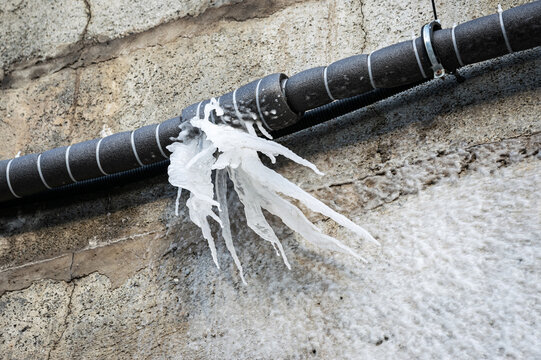Just how do you feel when it comes to 6 Ways to Prevent Frozen Pipes?

Winter can wreak havoc on your pipes, specifically by freezing pipelines. Below's exactly how to avoid it from happening and what to do if it does.
Introduction
As temperature levels decline, the threat of icy pipelines increases, possibly resulting in expensive repair services and water damage. Understanding how to avoid icy pipes is critical for house owners in cool climates.
Comprehending Frozen Pipes
What triggers pipes to freeze?
Pipes ice up when subjected to temperature levels below 32 ° F (0 ° C) for expanded periods. As water inside the pipes freezes, it increases, taxing the pipe walls and possibly causing them to burst.
Risks and problems
Frozen pipelines can lead to supply of water disturbances, residential or commercial property damages, and expensive repairs. Burst pipelines can flooding homes and cause comprehensive structural damages.
Indications of Frozen Water Lines
Recognizing icy pipes early can stop them from breaking.
How to identify icy pipes
Look for decreased water circulation from taps, unusual odors or sounds from pipelines, and visible frost on exposed pipelines.
Avoidance Tips
Protecting susceptible pipelines
Wrap pipelines in insulation sleeves or utilize warm tape to safeguard them from freezing temperatures. Focus on pipelines in unheated or exterior locations of the home.
Heating strategies
Keep indoor areas effectively heated, particularly locations with plumbing. Open up cabinet doors to permit cozy air to flow around pipes under sinks.
Shielding Outdoor Pipes
Yard hoses and outdoor faucets
Separate and drain pipes yard hose pipes prior to winter. Install frost-proof faucets or cover outdoor faucets with insulated caps.
What to Do If Your Pipes Freeze
Immediate actions to take
If you think icy pipelines, maintain taps open up to ease pressure as the ice melts. Utilize a hairdryer or towels soaked in hot water to thaw pipes slowly.
Long-Term Solutions
Architectural adjustments
Consider rerouting pipelines far from outside walls or unheated areas. Add extra insulation to attics, basements, and crawl spaces.
Updating insulation
Invest in high-grade insulation for pipelines, attic rooms, and walls. Proper insulation helps keep constant temperature levels and decreases the risk of frozen pipes.
Verdict
Preventing icy pipelines calls for positive steps and fast feedbacks. By understanding the reasons, indicators, and preventive measures, home owners can protect their plumbing during cold weather.
5 Ways to Prevent Frozen Pipes
Drain Outdoor Faucets and Disconnect Hoses
First, close the shut-off valve that controls the flow of water in the pipe to your outdoor faucet. Then, head outside to disconnect and drain your hose and open the outdoor faucet to allow the water to completely drain out of the line. Turn off the faucet when done. Finally, head back to the shut-off valve and drain the remaining water inside the pipe into a bucket or container. Additionally, if you have a home irrigation system, you should consider hiring an expert to clear the system of water each year.
Insulate Pipes
One of the best and most cost-effective methods for preventing frozen water pipes is to wrap your pipes with insulation. This is especially important for areas in your home that aren’t exposed to heat, such as an attic. We suggest using foam sleeves, which can typically be found at your local hardware store.
Keep Heat Running at 65
Your pipes are located inside your walls, and the temperature there is much colder than the rest of the house. To prevent your pipes from freezing, The Insurance Information Institute suggests that you keep your home heated to at least 65 degrees, even when traveling. You may want to invest in smart devices that can keep an eye on the temperature in your home while you’re away.
Leave Water Dripping
Moving water — even a small trickle — can prevent ice from forming inside your pipes. When freezing temps are imminent, start a drip of water from all faucets that serve exposed pipes. Leaving a few faucets running will also help relieve pressure inside the pipes and help prevent a rupture if the water inside freezes.
Open Cupboard Doors
Warm your kitchen and bathroom pipes by opening cupboards and vanities. You should also leave your interior doors ajar to help warm air circulate evenly throughout your home.

I am very inquisitive about Winter Plumbing Precautions: Preventing Frozen Pipes and I really hope you appreciated my page. Don't hesitate to set aside a second to share this blog posting if you enjoyed it. I am grateful for being here. Please come visit our blog back soon.
Click Here
Comments on “Key Methods for Avoiding Frozen Plumbing in Cold Weather”